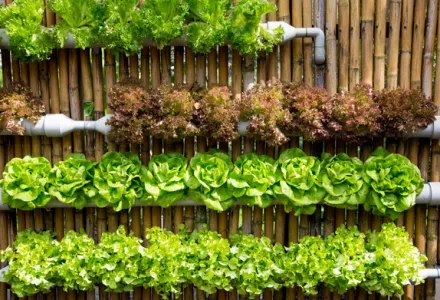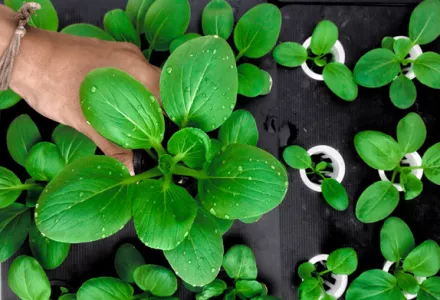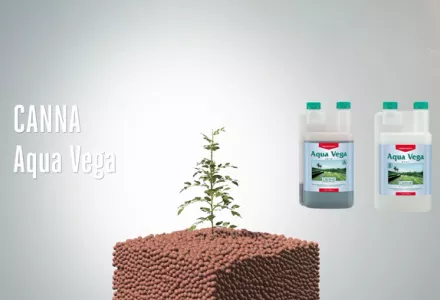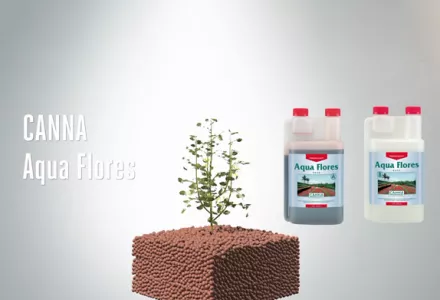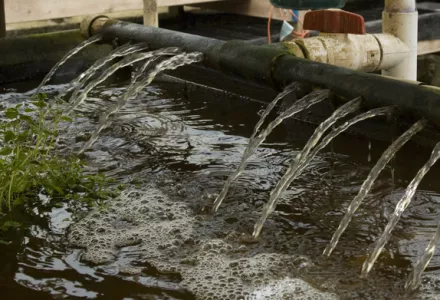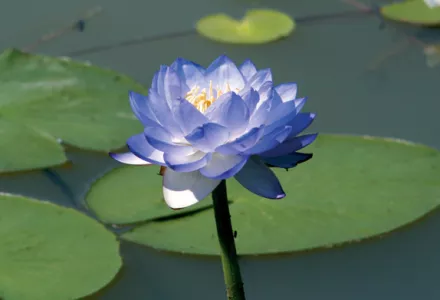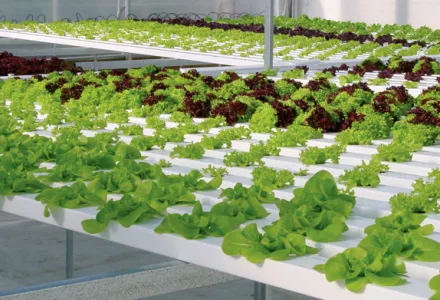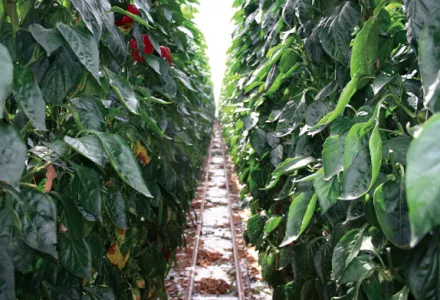There are a few things you have to take into account when you're growing on a recirculating system. You need good water quality, the right composition of nutrients and the right temperature in your grow room.
The water quality can make it very difficult to achieve good results with recirculating systems. High proportions of bicarbonate, sodium, chloride or heavy metals such as zinc, iron or manganese cause common problems stemming from the water quality. Tap water with a high EC (greater than 0.75) can mean high concentrations of sodium or chloride and may cause difficulties. Using a reversed osmosis filter can reduce high sodium and chloride content in the tap water.
Well water or water that is fed in via zinc pipes can contain too many heavy metals. Spring and surface water may contain organic contamination and residues of pesticides, which can have an adverse effect on the growth of the plants.
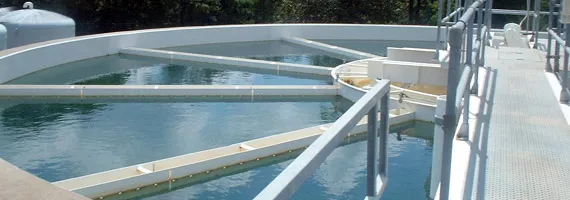
Composition of nutrients
The proportions of the various nutrient elements are more important for recirculating systems then with any other system. This is because the plant directly influences the composition of the nutrient. Not all nutrients are absorbed with equal ease by the plant. Potassium (K), for example, is absorbed much more easily than Calcium. In a recirculating nutrient solution, the potassium concentration will drop much faster while calcium might accumulate. Another important aspect of the nutrient is the type of nitrogen. If nitrogen is offered in the form of nitrate, the absorption of potassium and calcium will be stimulated while at the same time the pH in the nutrient solution rises; if nitrogen is offered chiefly in the form of ammonium, the result will be the opposite.
The easiest way to avoid problems with nutrients is to use ready-made nutrients with a composition suited to cultivation on recirculating systems.
CANNA has developed a special line of nutrients for this: CANNA AQUA.
Disease and plagues in recirculating systems
The major advantage of hydroponics is that the inert substrates used are sterile, and so contain no diseases or weeds. However, this does not mean that no diseases ever occur. The absence of competing micro-organisms means that any diseases and plagues that are introduced can develop much faster, and a pathogenic mould can infect all the plants via the circulating water.
To create a healthy microclimate in spite of this, useful micro-organisms can be administered to slow down diseases. Examples of positive micro-organisms include Bacillus Subtillus and Trichoderma Harazium. These micro-organisms can produce antibiotics and enzymes that halt the development of fungal diseases.
The fungal pathogens Pythium and Fusarium are generally the cause of the most common diseases in recirculating systems (for more information, see CANNA’s info couriers on Fusarium and Pythium). Pythium is a type of mould fungus that penetrates the root and interferes with the absorption of water and nutrients. The roots start to swell and the tips of the roots turn brown. Leaves often turn yellow and red veins appear. Both weak and strong, aggressive types of Fusarium have been distinguished. Weak Fusarium types cause evaporation problems that cause the plant to go limp. Aggressive types result in a brown discolouration of the vascular bundles up to near the top of the plant. The base of the stem also becomes hard.

Sadly, no effective means exist to combat fungal diseases. Using chemical fungicides is not recommended, as they form a risk for the producer and the consumer, as well as the environment. One research study in Switzerland revealed that 6% of the commercial plant samples were contaminated with pesticides through improper use of chemical fungicides!
Fungal diseases are often difficult to combat once they have managed to develop. That is why it is of the utmost importance to do everything to prevent or suppress these diseases. A number of measures exist that can be implemented as part of the cultivation process: Pythium types develop fastest at temperatures above 25°C. By making sure that the temperature of the room and of the nutrient solution is kept low, around 20°C, you can suppress the growth of Pythium. Make sure that the temperature does not drop below 15°C, because this will make the absorption capacity of the roots decrease too much.
So far, good hygiene has proved to be the best weapon in fighting fungal-based diseases. Mould spores can easily spread via your clothes or your skin. That is why you should avoid visiting multiple areas on one day if you suspect that they may contain diseases. Mould spores can also spread via contaminated material (such as pots that still contain traces of the mould). Make sure that the starting materials are cleaned before every crop! Diseases may also be contracted and spread from cuttings purchased. Only buy cuttings from reliable suppliers or use your own cuttings.
Temperature and recirculating systems
A suitable temperature is important for optimum plant activity. For top results, the temperature must be at least 20°C. Temperatures above 30°C can cause problems with temperature sensitive types, certainly when this is combined with low humidity. The temperature should be between 20°C and 30°C to avoid problems.
Good root development requires the temperature of the nutrient solution to be high (20-25°C). Below 15°C, the absorption capacity of the roots diminishes rapidly; the nutrient transport in the plant stagnates, reducing the yields. The growth of the plant slows and the root system will be less fine (fewer branches and fewer root hairs). The first visual sign that the temperature is too low is purple coloration of the leaf stems, main veins and stem. If the low temperatures persist for too long, leaves may also be malformed. The absorption of nitrate, phosphate, magnesium, potassium, iron and manganese is hindered most at low temperatures.
If the difference between the temperatures for the dark and light periods is too great, problems may arise immediately after the lamps are switched on. Leaves are warmed and water will start to evaporate. However, the roots are too cold to absorb sufficient water. This will make the plant hang limply and perhaps wilt. Try to prevent major differences between night and day temperatures as much as possible (no more than a few degrees difference). Maintaining an optimal root temperature is a precondition for good results. An aquarium heating element with a thermostat can be used as a cheap way to maintain the temperature.

